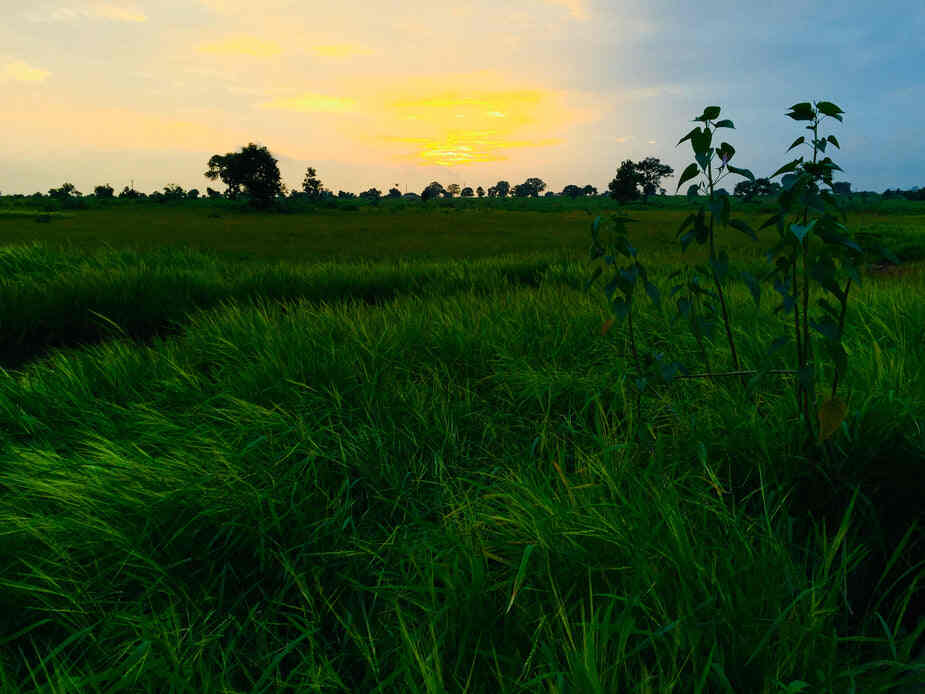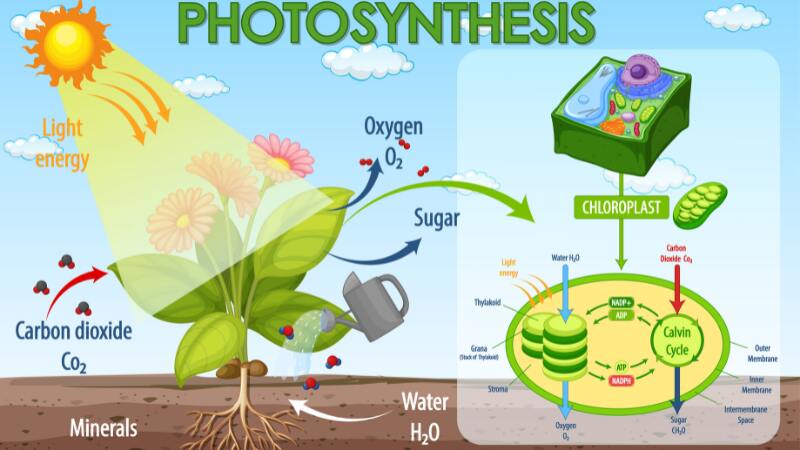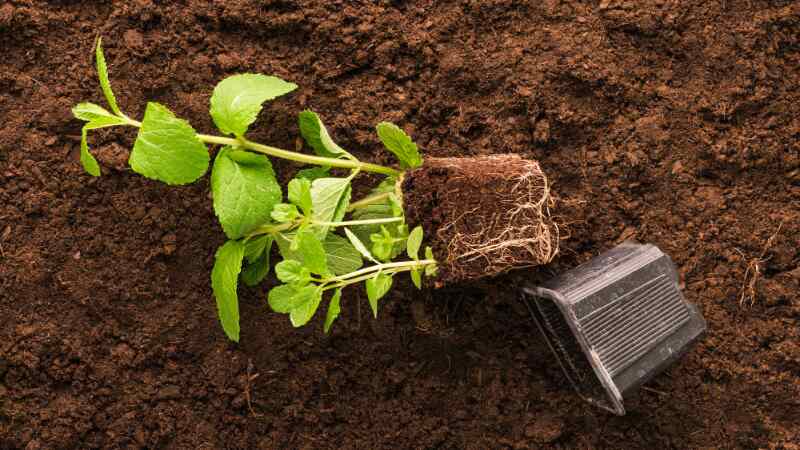Plants: A Deep Dive into the Green World
Have you ever taken a moment to appreciate the green life around you? Whether they’re towering trees in the forest or greenery in your home, plants aren’t just passive parts of nature—they’re the life force that sustains our world. From providing oxygen to supporting entire ecosystems, they are essential to the survival of almost all living things, including us.

In this article, we’ll take a deep dive into the fascinating world of plants and nature, revealing how they interact with the environment, adapt to challenges, and play an indispensable role in human lives. do
In the tapestry of life on Earth. They are not only the green background of our world but the basis of life itself. From the smallest moss to the largest sequoia, they have a profound effect on the environment, climate, and even human well-being. This essay explores the deep relationship between them and nature, exploring their ecological importance, evolutionary history, and indispensable role in sustaining life on Earth.
The Essential Role of Plants in Ecosystems
- Photosynthesis and Oxygen Production

At the heart of plant life lies photosynthesis, a process that transforms sunlight into energy. along with some bacteria and algae, use sunlight, carbon dioxide, and water to produce glucose and oxygen. This simple process not only fuels themselves but also replenishes Earth’s atmosphere with oxygen—a gas essential for most living organisms’ survival, including humans.
Without greenery, life as we know it would simply not exist. Photosynthesis is an important process in which, algae, and some bacteria convert carbon dioxide and water into glucose and oxygen using sunlight. It not only provides energy to them but also replenishes the earth’s atmosphere with oxygen, which is essential for the survival of aerobic organisms, including humans.
- Soil Formation and Erosion Control

Organic life also plays a crucial role in forming and protecting soil. Through the decay of leaves, branches, and roots, they add organic matter to the soil, enriching it with nutrients. Additionally, the roots help stabilize the soil, preventing erosion caused by wind or water. Without plants, landscapes would quickly degrade, leaving the ground vulnerable to erosion, landslides, and other forms of environmental damage.
Green life contributes to soil formation through the decay of organic matter and the action of their roots. This organic matter makes the soil more fertile. Additionally, plant roots help stabilize soil, prevent erosion, and maintain landscape integrity.
Evolution and Adaptation
Adaptation to Different Environments
Trees have developed a remarkable array of adaptations that allow them to thrive in diverse environments, from arid deserts to lush green areas. They are incredibly adaptable, evolving to survive in various environments, from the driest deserts to the wettest rainforests.
In arid regions, succulents like cacti store water in their thick, fleshy leaves, allowing them to survive for long periods without rain. In contrast, water lilies have evolved large, floating leaves that enable them to thrive in aquatic environments.
These adaptations ensure that trees can survive and flourish in even the harshest conditions. Plants have evolved a variety of adaptations to cope with their environment. For example, succulents in arid areas have thick, fleshy leaves that store water, while water lilies have large, floating leaves that help them float in aquatic environments.
Pollination and Reproduction
Greenery has also developed complex strategies for reproduction, often involving fascinating partnerships with animals. Pollination is the transfer of pollen from one flower to another. Many living green structures rely on insects, birds, and bats to carry out this task, offering nectar as a reward.
Reproduction has also evolved in interesting ways. Many plants rely on animal pollinators, such as bees, birds, and bats, to transfer pollen from one flower to another. This mutualism benefits both plants and pollinators, as it spreads their pollen, and pollinators obtain nectar or pollen by eating them.
Symbiotic Relationships
Plants frequently form symbiotic relationships with other organisms. One example is the relationship between them and mycorrhizal fungi, where fungi increase nutrient uptake for natural growth in exchange for carbohydrates. Similarly, nitrogen-fixing bacteria help them access nitrogen, an essential nutrient, by converting atmospheric nitrogen into a form plants can use.
Greenery often engages in symbiotic relationships with other organisms. For example, mycorrhizal fungi form a partnership with their roots, increasing the uptake of nutrients in exchange for carbohydrates produced by the plant. Similarly, certain greeneries have developed relationships with nitrogen-fixing bacteria to obtain essential nutrients.
Human Relationship with Plants
Food and Agriculture.
Vegetation forms the basis of human agriculture and is a primary source of food. Crops like rice, wheat, and maize feed billions of people worldwide. Over centuries, humans have domesticated them, allowing them to cultivate specific traits like higher yields and disease resistance. As a result, nature has played a central role in the development of human civilization.
Plants are the basis of agriculture and human food. Major crops such as wheat, rice and maize are important in many diets around the world. The domestication of their diversity has allowed civilizations to grow and populations to grow.
2. Medicinal plants: Many modern medicines are derived from trees. The study of medicinal plants, known as ethnobotany, has led to the discovery of numerous medications. For instance, the bark of the willow tree was the source of the painkiller aspirin.
Medicinal Plants

Many modern medicines have their origins in plants. For example, aspirin was derived from the bark of the willow tree, while the rosy periwinkle gave us cancer treatments. Ethnobotany, the study of how cultures use them for medicinal purposes, has led to the discovery of numerous cures. Even today, scientists continue to explore the healing properties to develop new treatments.
Impact of Human Activities on Organic life
1. Deforestation and habitat loss.

One of the biggest threats to greenery life is deforestation. Human activities have drastically reduced forested areas for agriculture, urbanization, or logging. This not only endangers species but also threatens the animals and ecosystems that depend on them. Moreover, deforestation contributes to increased carbon dioxide levels in the atmosphere.
further exacerbating climate change. Deforestation for agriculture, urbanization, and logging has caused significant habitat loss. This threatens not only the plant species but also the countless animals that depend on them because deforestation raises atmospheric concentrations of carbon dioxide, which causes climate change.
2. Climate Change
Climate change is altering the distribution and growth of Nature across the globe. Changes in temperature and rainfall patterns are forcing green life to migrate to new areas or adapt to harsher conditions. Some species may not survive these changes, leading to potential extinction. The loss of these species could have cascading effects on ecosystems.
Changes and precipitation patterns can alter greenery communities and affect ecosystems. as nature is essential for the survival of other organisms. For example, rising temperatures can lead to the altitudinal or latitudinal migration of Shrubs and tree species, potentially leading to the extinction of those that cannot adapt
3. Pollution
Air pollution has severe consequences for natural life. Pollutants like sulfur dioxide and nitrogen oxides can damage tissues, inhibit growth, and reduce reproductive success. Acid rain, a byproduct of these pollutants, can change soil chemistry and harm natural life. Furthermore, water pollution from industrial waste and agricultural runoff affects aquatic organic life, leading to biodiversity loss in freshwater ecosystems.
Water pollution also affects their health. This pollution can damage tissue, inhibit growth, and reduce reproductive success. Acid rain, caused by sulfur and nitrogen compounds in the atmosphere, can change soil chemistry and damage greenery.
Protection and Sustainability
Protected Areas and Reserves
Establishing protected areas and reserves is one of the most effective ways to preserve plant biodiversity. These areas serve as refuges for endangered species and contribute to the conservation of ecosystems. National parks, nature reserves, and botanical gardens play a critical role in safeguarding plant species for future generations.
Establishing protected areas and reserves helps protect species and their habitats. These areas act as a refuge for endangered plants and contribute to the conservation of biodiversity.
Sustainable Agriculture
Implementing sustainable agricultural practices is essential to reducing the environmental impact of farming. Techniques such as crop rotation, organic farming, and reduced use of chemical pesticides and fertilizers help protect soil health and preserve biodiversity. Sustainable agriculture ensures that we can continue to produce food without depleting natural resources.
Earth.
Plants are the primary producers in most ecosystems. Through the process of photosynthesis, they convert sunlight into chemical energy, producing oxygen and organic compounds that fuel the food chain. This process is fundamental to life on Earth, as it forms the basis of almost all food webs.
1. Habitat and Biodiversity: Plants provide habitat for countless organisms. Forests, grasslands, and wetlands each support unique plant and animal communities. For example, tropical rainforests are home to more than half of the world’s terrestrial species, thanks to their rich diversity.
They serve as the backbone of ecosystems, providing shelter and food for countless organisms. In forests, grasslands, and wetlands, green life creates diverse habitats where species can thrive. Tropical rainforests, in particular, support more than half of the world’s terrestrial species thanks to their rich variety of lush life. From insects to mammals, countless creatures rely on plants for survival.
2. Water Regulation: Plants play an important role in the hydrological cycle. They absorb and release water through transpiration, which affects local and global weather patterns. Forests, in particular, help regulate rainfall and prevent excessive runoff, which can lead to flooding.
Through a process called transpiration, they release water vapor into the atmosphere, helping to regulate local and global weather patterns. Forests, in particular, are known to influence rainfall, with the Amazon rainforest famously referred to as the “lungs of the Earth” for its impact on global weather. Additionally, plants help manage water runoff, reducing the risk of floods by absorbing and filtering rainwater.
Humans have relied on plants for centuries for food, medicine, and materials. Humans and plants are intimately connected, with plants influencing cultures, economies, and health.
Culture and Spiritual Significance: Plants have important cultural and spiritual significance in many societies. Trees such as oak and banana have symbolic meanings in different cultures, while certain trees are used in religious rituals and traditional practices.
Throughout history, greenery has held deep cultural and spiritual significance. In many cultures, trees like oak or banyan are considered sacred, while certain plants are used in religious rituals and practices. From ancient herbal remedies to modern-day plant-based diets, the relationship between humans and plants is rich and multifaceted.
While trees are indispensable to life on Earth, human activities have increasingly threatened survival. Deforestation, climate change, and pollution are major challenges facing plant life today.
Protection and durability
Addressing the challenges faced by them requires concerted efforts in conservation and sustainable practices. Conserving plant diversity and promoting responsible use of resources is critical to maintaining healthy ecosystems and ensuring a sustainable environment for future generations.
2. Sustainable Agriculture: Implementing sustainable agricultural practices can reduce the impact of plants on ecosystems. Techniques such as crop rotation, organic farming, and reduced use of chemical pesticides and fertilizers help maintain soil health and reduce environmental degradation.
3. Restoration projects: Restoration projects are essential initiatives focused on revitalizing ecosystems that have been damaged by human activity, natural disasters, or climate change. These projects often begin with identifying degraded areas—such as deforested lands, polluted water bodies, or overgrazed grasslands—and developing strategies to restore them to their natural state.
A key aspect of restoration is the reintroduction of native plant species that once thrived in the area. Native plants are crucial because they are adapted to the local environment and play a vital role in supporting the region’s biodiversity. Reintroducing these plants helps revive soil health, improve water retention, and restore habitats for local wildlife, including animals and insects that rely on these plants for food, shelter, and breeding.
Restoration projects aim to rehabilitate degraded ecosystems and reintroduce native plant species. By restoring natural habitats, these projects help reestablish ecological balance and support the recovery of their and animal communities. Reforestation efforts, for instance, are crucial in combating the effects of deforestation and climate change.
4. Education and Advocacy: Raising awareness about the importance of plants and the threats they face is essential to promote conservation efforts. Education programs and advocacy campaigns can motivate individuals and communities to take steps to protect plant life.
Plants are the unsung heroes of our planet, quietly sustaining life and shaping the world in profound ways. From their role in ecosystems to their importance in human culture, they are integral to the earth’s balance and health. As we continue to face environmental challenges, recognizing the value of them and taking steps to protect them is vital for the well-being of our planet and future generations.
By understanding and appreciating the complex relationships between plants and nature, we can better advocate for conservation efforts and work toward a more sustainable and harmonious coexistence with the natural world. The vibrant greenery of our planet is not just a backdrop but a vital life force that deserves our respect and protection.
FAQs
1. Why are plants important for human survival?
they produce oxygen, provide food, and support ecosystems that are essential for human life.
2. “How do plants help in controlling soil erosion?”
They help stabilize soil through their root systems, preventing soil erosion caused by wind and water. Their organic matter also contributes to soil fertility.
3: How do plants contribute to biodiversity and ecosystem stability?
Plants provide habitats and food for countless species. Ecosystems like tropical rainforests, which has rich in diversity, support more than half of the world’s terrestrial species
4 Why are medicinal plants important, and what are some examples?
They are crucial for human health, as many modern medicines are derived from them. Examples include the willow tree, from which aspirin was derived, and the rose periwinkle, which provided treatments for cancer
5: How does climate change impact plant life?
Climate change alters the growth patterns and distribution of plants. Shifts in temperature and rainfall can force them to migrate to new areas, and some may face extinction if they cannot adapt.
Conclusion
Greenery is the backbone of life on Earth, providing oxygen, food, shelter, and vital resources for countless organisms, including humans. As we face growing environmental challenges like deforestation, pollution, and climate change, we must recognize the indispensable role plants play in maintaining ecological balance.
By protecting plant biodiversity and promoting sustainable practices, we ensure the health of our planet and a better future for generations to come. Understanding, appreciating, and conserving plant life is not just beneficial—it’s necessary for the survival of all life on Earth.
Sustainable practices such as reforestation, habitat restoration, and organic farming offer practical solutions to these challenges. By replanting trees, protecting wetlands, and supporting organic agriculture, we can help restore damaged ecosystems and create greater harmony between humans and the natural world. Additionally, individual actions such as reducing waste, supporting plant conservation efforts, and planting plants in our homes and communities can also contribute to the overall health of our environment.
They are the lifeblood of our planet. Their health directly affects the well-being of all life on Earth. As custodians of this planet, it is our responsibility to understand, appreciate, and actively work to protect plant life for the sake of future generations. The survival of Earth’s ecosystems—and, by extension, our survival—depends on the choices we make today



